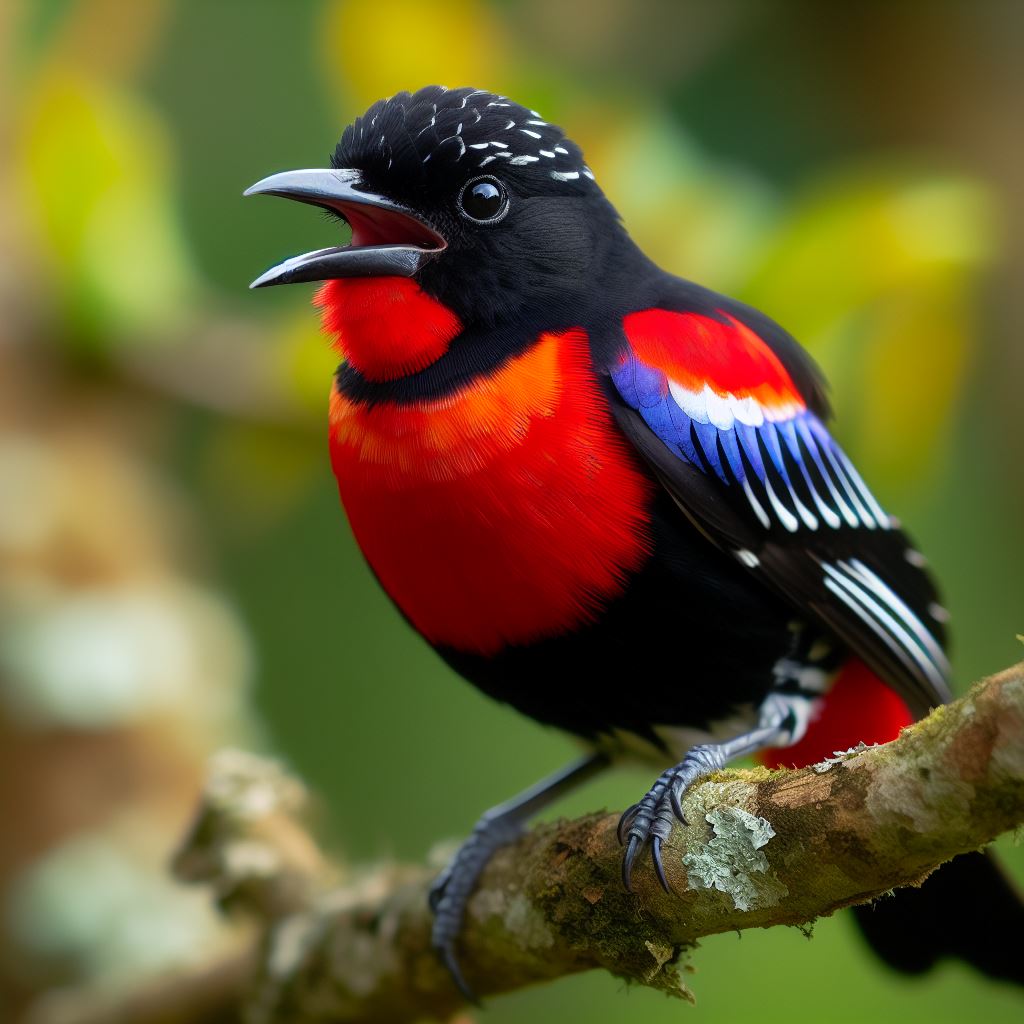Most beautiful small birds - Sykalo Eugen 2024
Long-tailed Meadowlark (Leistes loyca)
Identification:
- Species name: Long-tailed Meadowlark
- Scientific name: Leistes loyca
- Family: Icteridae (Blackbirds)
- Order: Passeriformes (Songbirds)
- Subclass: Neornithes (Modern birds)
- Class: Aves (Birds)
Description:
- Size: A striking charmer, about 25-28 cm (9.8-11 in) long with a wingspan of 34-38 cm (13.4-15 in).
- Body shape: Slender and graceful, with a long, slightly downcurved beak for gleaning insects, a long, elegant tail that seems to stretch forever as it dances, and strong legs adapted for running and hopping.
- Plumage color:
Males: Stunning contrast of bright red breast and throat, set against dark brown upperparts and streaked underparts. White facial spot near the base of the beak.
Females: Less flashy, with streaked brown upperparts and buff-colored underparts, lacking the distinctive red bib.
Both sexes have long, black beaks, large dark brown eyes, and dark brown legs.
Behavior:
- Method of feeding: Primarily insectivorous, gleaning insects from the ground, leaves, and branches with acrobatic dips and dashes. May also take seeds, fruits, and small vertebrates.
- Reproduction: Builds cup-shaped nests on the ground or in low vegetation. Lays 3-4 pale blue eggs with dark speckles. Both parents care for the young.
- Movement: Resident in most of its range, with some local movements in response to food availability.
- Communication: Loud, clear whistles and calls, with variations used for alarm, foraging, and mating. Males have a complex song used for territorial defense and attracting mates.
Ecology:
- Habitat: Grasslands, fields, open woodlands, and even parks and gardens. Prefers areas with low vegetation and plenty of insects.
- Diet: Insects, spiders, worms, snails, seeds, fruits, and even small lizards. Plays an important role in insect pest control.
- Hunting methods: Runs and hops along the ground, constantly flicking its long tail, and dipping its head to peck at insects or glean them from surfaces. May also fly up to snatch insects mid-air.
Distribution: Found in southern South America, from Chile and Argentina to the Falkland Islands.

The Long-tailed Meadowlark, a feathered flame painting the South American pampas, might seem like a flamboyant resident of open grasslands at first glance. But beneath its vibrant plumage and soaring songs lies a treasure trove of surprising facts and adaptations that will transform this pampa maestro into a captivating avian acrobat, champion insect hunter, and unexpected musical mimic in your eyes.
Masters of the Aerial Ballet: Forget clumsy hops; Long-tailed Meadowlarks reign supreme in the domain of wide-open skies. Their powerful wings and impossibly elongated tail feathers propel them through the air with breathtaking grace, performing mesmerizing dives, loops, and spirals that would leave fighter pilots envious. Imagine them as feathered Cirque du Soleil stars with built-in miniature jetpacks and extended flags for added flourish.
Hidden Feasting Technique: Don't underestimate their aerial hunting prowess! Long-tailed Meadowlarks are expert insectivores, using their keen eyesight and agile maneuvering to snatch flying grasshoppers, termites, and even dragonflies mid-air. They hover, twist, and dart with lightning speed, transforming the sky into their personal buffet — talk about feathered fighter jets with built-in miniature aerial nets and extendable tongues!
Unexpected Musical Mimics: Their songs aren't just chirps and whistles. Long-tailed Meadowlarks possess a remarkable ability to mimic the sounds of their surroundings, from the calls of other birds to the chirping of crickets and even the whistling of the wind. Their repertoire becomes a feathered orchestra, serenading the pampas with a unique blend of their own melodies and borrowed tunes. Imagine them as musical chameleons with built-in miniature sound libraries and a penchant for improvisation.
Singing with Soaring Spirit: Their own songs aren't just imitations. Long-tailed Meadowlarks possess a rich and complex repertoire of original melodies, with clear, whistle-like calls, intricate trills, and even a signature bubbling song that echoes across the vast plains. Their voices rise above the pampas like feathered troubadours, serenading the skies with their soaring spirit and cultural flair.
Symbiotic Symphony: Long-tailed Meadowlarks play a vital role in the pampa ecosystem. By controlling insect populations, they help maintain a healthy balance in the grasslands, contributing to the thriving tapestry of life in these diverse habitats. These feathered pest controllers are crucial threads in the web of ecological stability.
Cultural Charmers: In South American cultures, the Long-tailed Meadowlark is associated with freedom, resilience, and the vibrant spirit of the wide-open spaces. Its flamboyant plumage and soaring songs inspire awe and respect, making it a treasured symbol of the region's enduring spirit and the boundless beauty of its landscapes.
Unexpected Regional Variations: Did you know? Not all Long-tailed Meadowlarks are the same! Different populations across South America boast subtle variations in plumage color and song patterns, adding a touch of feathered diversity to this adaptable species.